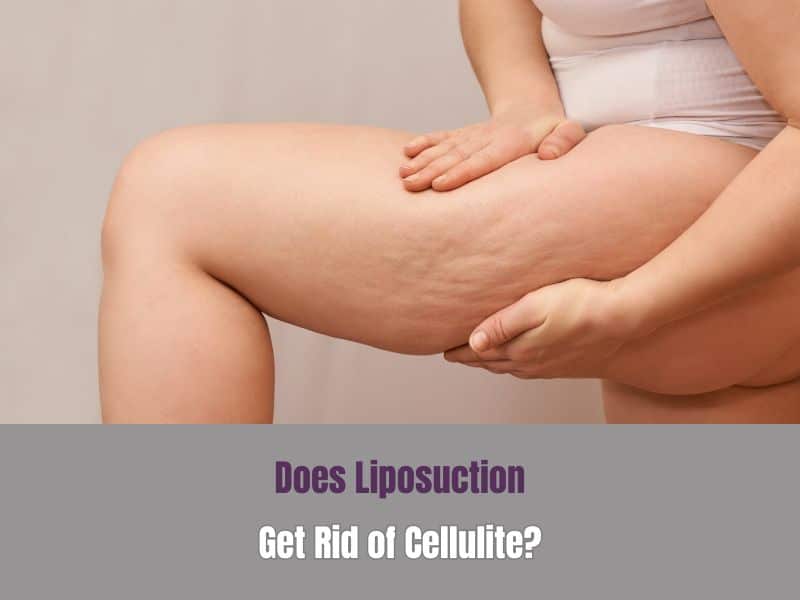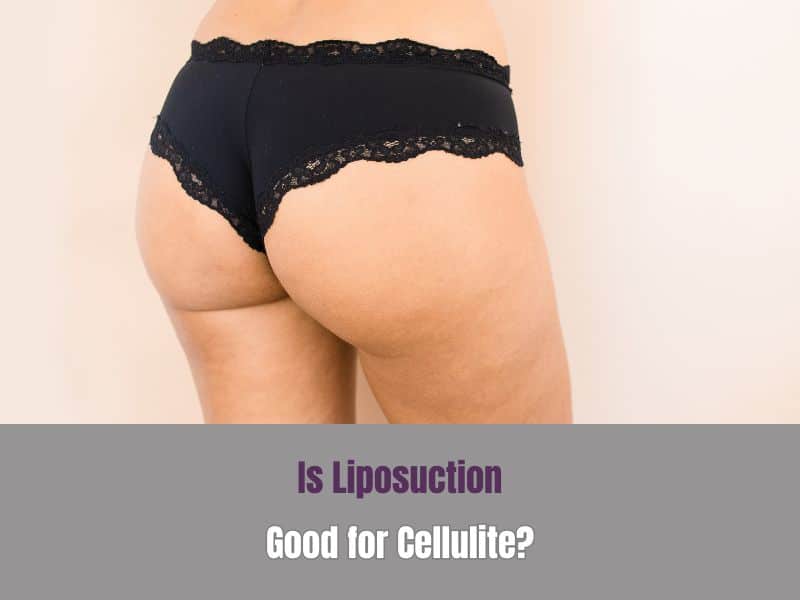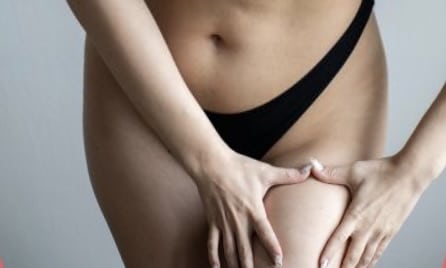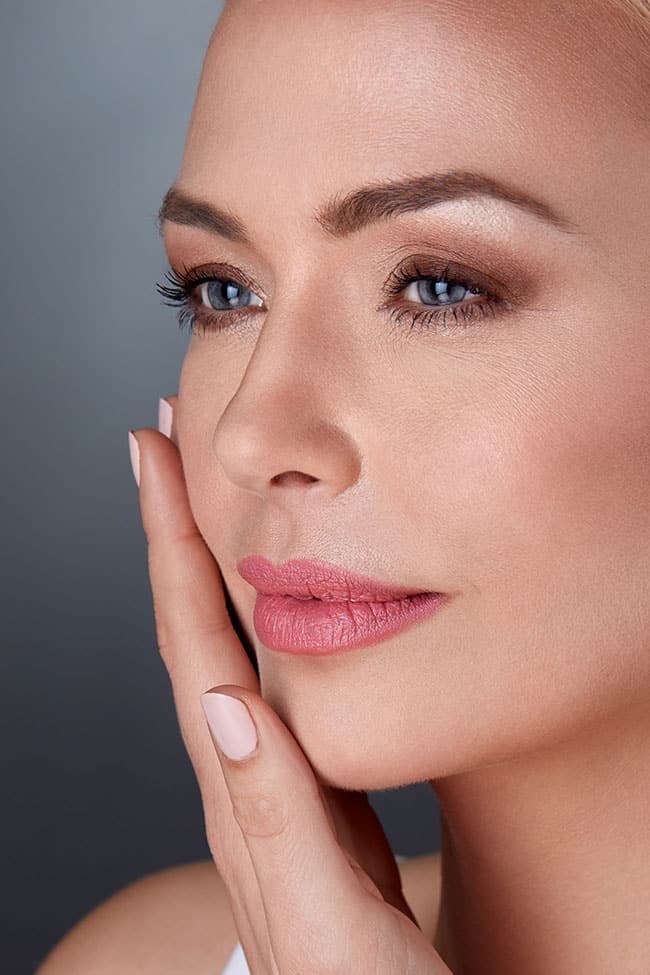
Two of the most common cosmetic issues that patients come to see us for are excess fat and cellulite. Excess fat can happen anywhere on the body, and the main way that we treat this issue is with liposuction. Cellulite, the dimpling and bumps that occur most frequently on the thighs and buttocks, also has its own set of treatments available.
However, a common question we often receive is, “Does Liposuction Get Rid of Cellulite?”
Basically, patients want to know if a treatment most often associated with fat removal will also work to reduce cellulite. In this article, we will address this issue and try to help the reader better understand the difference between these two areas of plastic surgery.
Is Liposuction Good for Cellulite?
The short answer is: Not usually.
Let’s break it down, starting with what the liposuction procedure actually entails.
What Is Liposuction?
Liposuction, as you know, is a plastic surgery procedure designed to remove excess fat around connective tissue. The procedure works by suctioning out the unwanted fat through a thin metal tube called a cannula. The necessary incisions are very small, and when they are carefully closed by a skilled surgeon, they are hardly noticeable after healing.
Liposuction can be performed nearly anywhere on the body. This includes the thighs and buttocks, where cellulite most frequently occurs in women. It’s possible to have cellulite on other parts of the body, and men can sometimes have it also, but these are less common occurrences.
Lipo can be combined with various surgeries for comprehensive liposuction results, including a tummy tuck, fat transfer breast augmentation, chin facelifts, and body contouring procedures like Brazilian butt lifts.
Patients seeking liposuction to remove unwanted fat will frequently inquire about whether their liposuction can also help with cellulite in the same area. Sometimes, it will. In order to explain further, we must first define what cellulite is.
What Is Cellulite?
Cellulite is a harmless condition of the skin that occurs most prevalently in women. Not all women have cellulite, however, because not all women are prone to it. Whether or not a woman is prone to cellulite tends to be linked to whether she has a genetic predisposition. That is, if her mother, grandmothers, aunts, sisters, etc. have cellulite, she’s more likely to have it too.
What cellulite actually is on a cellular level is fibrous cords, located just beneath the skin, which are tying the skin to the muscle below, through the uppermost layer of subcutaneous fat cells. Cellulite forms when these cords pull the skin down in spots. This causes the notorious skin dimpling.
How Liposuction Can Sometimes Eliminate Cellulite
During a liposuction surgical procedure to remove stubborn fat deposits, if the surgeon is able to loosen or sever the fibrous bands pulling down on the skin, this can often improve the appearance of cellulite. You will notice, for example, that in some lipo for cellulite before and after pictures, there is far less cellulite in the after pictures.
However, traditional liposuction techniques target fat — not fibrous bands. So, unless you’ve made arrangements for your surgeon to specifically try to reduce the appearance of cellulite during your body contouring procedure, it is unlikely that you’ll end up with a cellulite reduction following cosmetic surgery.
When Liposuction Actually Makes Cellulite Worse
It is worth noting that in some rare cases, traditional liposuction methods can actually end up making cellulite worse. This usually occurs when the liposuction fat removal takes away the “tautness” of the skin.
The loose skin was formerly stretched out due to the extra fat or weight gain, and especially if the patient has poor skin laxity, the skin may stay a bit stretched even after there is less fat for it to hold. This, combined with the cellulite that was already present, can cause even more cellulite and uneven skin texture.
Is There Any Other Way to Get Rid of Cellulite?
There are many effective cellulite treatments available to treat your cellulite today. Often, patients have the best outcomes when the fibrous bands are cut or loosened with a specific surgical procedure that uniquely targets cellulite. This is going to be a better approach overall, as opposed to trying to reduce cellulite as a side effect of using liposuction techniques.
Does Liposuction Get Rid of Cellulite FAQ
Is there a way to permanently get rid of cellulite?
While there are certainly several promising cellulite reduction treatments on the market today, there is no one-size-fits-all, permanent solution for everyone who has cellulite.
Many treatments can improve cellulite significantly. However, cellulite can often come back, evolve, and change over time due to the effects of aging or worsen due to weight fluctuations. If you are interested in improving your liposuction, it’s a good idea to speak directly with an experienced plastic surgeon to find the best treatment for you.
Can liposuction remove cellulite from my thighs?
Sometimes liposuction on the thighs can treat cellulite in the same area, but not always. You need to meet with a board-certified plastic surgeon so that they can examine you to know for sure what treatments will provide optimal results.
Where on the body can you get liposuction?
Various body parts for liposuction can be targeted, including the abdomen, thighs, hips, buttocks, arms, back, neck, and chin. It’s important to consult with a board-certified surgeon to determine the best approach for your specific goals and needs.
What to expect from liposuction results?
After liposuction, you can expect swelling, bruising, and some discomfort during the first week as your body begins to heal. In the second week, swelling starts to go down, bruising fades, and your results start to become more visible, with most people returning to light activities at this stage.
By the third and fourth weeks, swelling decreases further, your new contours appear more defined, and any mild lumpiness under the skin begins to soften. Although improvement can be seen each week, it may take three to six months for all swelling to resolve and for your final results to fully develop.
Following your surgeon’s aftercare instructions is important for a smooth recovery and your best outcome.
What influences the price of a liposuction procedure?
The cost of liposuction can vary significantly based on several elements. These include the surgeon’s credentials and experience, which affect their professional fee; any pre-surgery and post-surgery expenses, such as medical tests, compression garments, prescription medications, and follow-up visits; anesthesia costs and the facility’s surgical fees; the specific method of liposuction (such as tumescent, power-assisted, laser-assisted, ultrasound-assisted/VASER, or high-definition techniques); the size and number of areas being treated; and the location of the practice, since clinics in larger metropolitan areas often charge more than those in smaller cities or rural regions.
Can you remove cellulite without surgery?
You can reduce the appearance of cellulite without surgery using targeted treatments like acoustic wave therapy, radiofrequency, and topical therapies designed to smooth dimpled skin and improve blood vessels circulation.
Combining these with a regimen of exercise and a balanced diet helps optimize results, especially after weight loss. FDA-approved options such as Cellfina®, Cellulaze®, and injectable therapies can further improve excess skin and cellulite, all with minimal downtime.
What surgery gets rid of cellulite on legs?
The most effective surgical options for cellulite removal on legs are subcision techniques like Cellfina®, Avéli™, and minimally invasive laser assisted liposuction. These treatments target the fibrous bands under the skin, providing lasting improvement in dimpled skin and addressing sagging or excess skin. Standard liposuction may remove fat, but will not reliably smooth cellulite unless combined with procedures to cut fibrous bands.
How do celebrities get rid of cellulite?
Celebrities typically use a combination of treatments including laser assisted liposuction, acoustic wave therapy, ultrasound assisted liposuction, and topical therapies to refine dimpled skin. They may also opt for non-surgical options such as radiofrequency, blood vessels-targeted therapies, and customized skincare routines. Maintaining a healthy weight and regular exercise are integrated for optimal results.
Will cellulite go away with fat loss?
Weight loss may reduce the appearance of cellulite, especially for those achieving a healthy weight. However, since cellulite is caused by fibrous bands tethering the skin, losing fat does not guarantee removal of dimpled skin or sagging skin. Excess skin after weight loss may even accentuate cellulite if skin laxity is present.
What is the best procedure to remove cellulite?
The most effective procedure for cellulite removal is subcision-based approaches, such as Cellfina®, Avéli™, and laser assisted liposuction (Cellulaze®), which release the fibrous septa causing dimpled skin. Ultrasound assisted liposuction and acoustic wave therapy also show promising long-term results for moderate to severe cases. Tumescent liposuction mainly targets excess fat, not cellulite, and will only affect dimpling if fibrous bands are treated directly.
Contact Us to Arrange for a Consultation
Cosmetic surgery has a range of options to help with both excess fat and cellulite treatment. VASER liposuction techniques, traditional liposuction, laser energy (cellulite reduction laser treatments), HD lipo, and many other treatments can help with both of these very common aesthetic concerns.
But to know what will work for you, you first need to book a consultation appointment with a board certified plastic surgeon. Dr. Ashley Steinberg is a female board certified plastic surgeon serving patients at her Houston practice. To learn more about cellulite reduction and liposuction treatments, please call our office today to schedule your appointment with Dr. Steinberg.
References
https://www.plasticsurgery.org/news/blog/plastic-surgery-treatments-to-eliminate-cellulite















